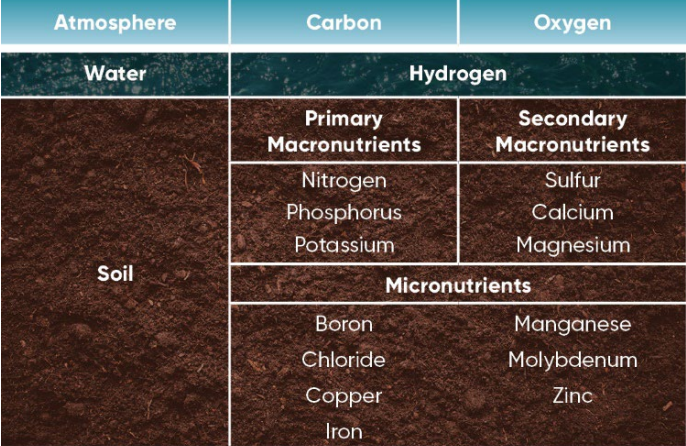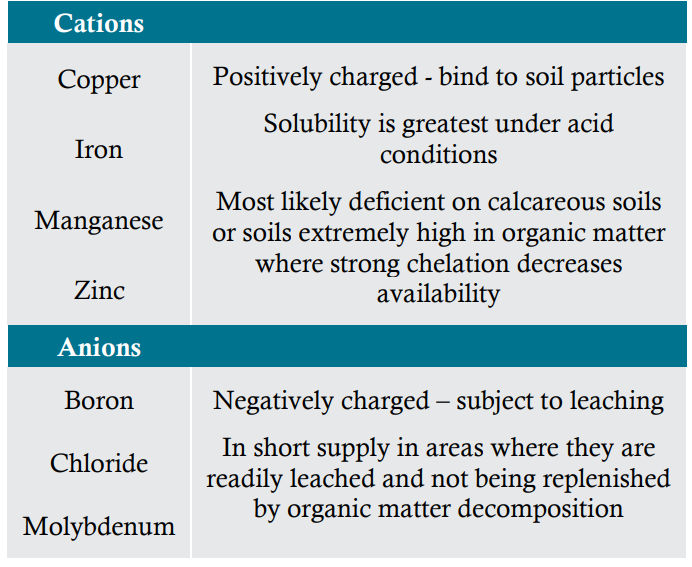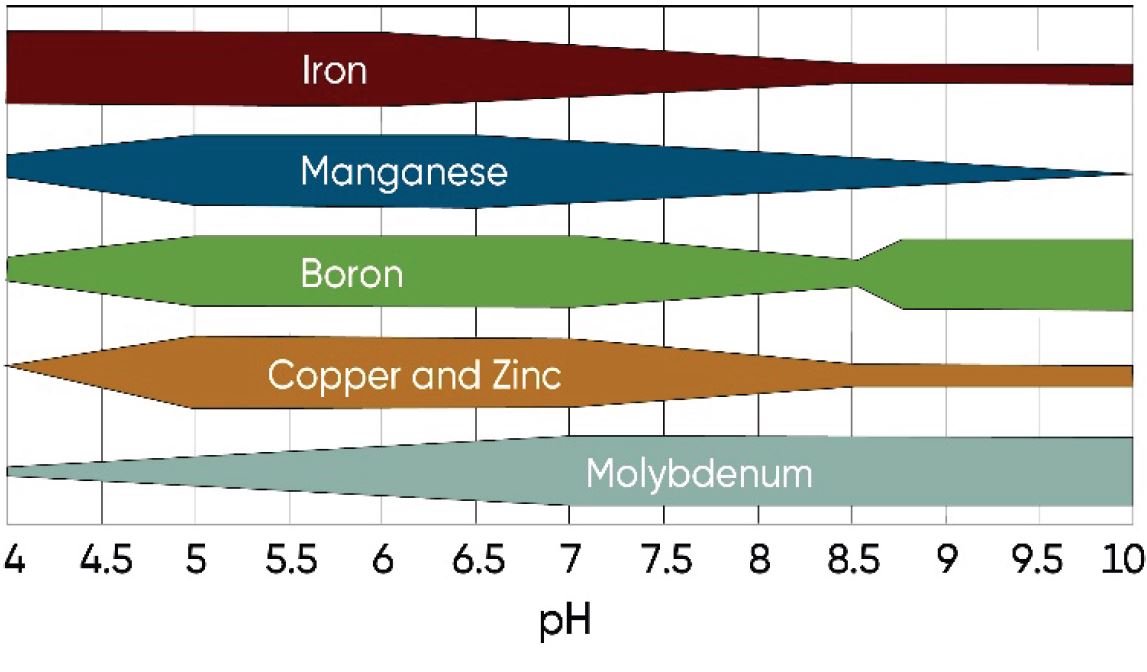Micronutrient deficiencies can be detected by visual symptoms on crops and by testing soils and plant tissues. To understand visual symptoms, it is useful to know the role each micronutrient plays in plant growth and development.
Functions of Micronutrients
Micronutrients differ in the form they are absorbed by the plant, their functions and mobility in the plant, and their characteristic deficiency or toxicity symptoms (Table 2 and 3).
Table 2. Plant available forms and functions of micro-nutrients in plants2.
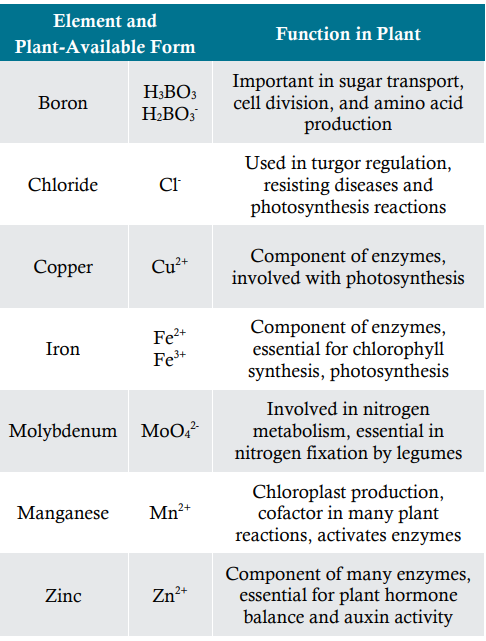
Micronutrient Deficiency Symptoms
Except for Mo, the micronutrients are considered weakly mobile or immobile in plants. This means that deficiency symptoms appear first or most severely on newest plant tissues. For molybdenum, deficiency symptoms appear first on oldest plant tissues. Symptoms vary according to crop, but generalized symptoms are shown in Table 3.
Table 3. General micronutrient deficiency symptoms2.
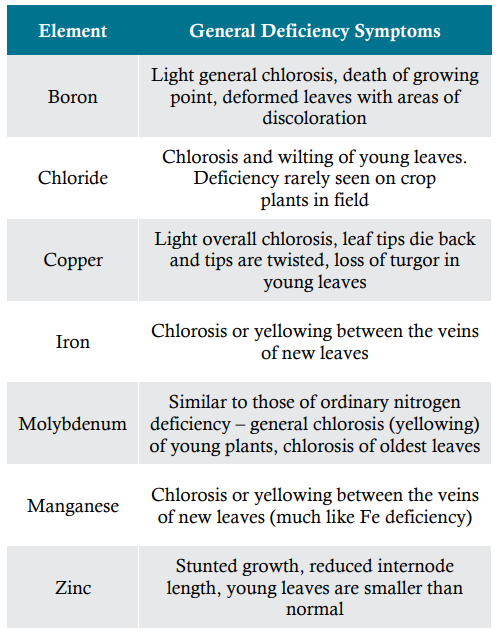
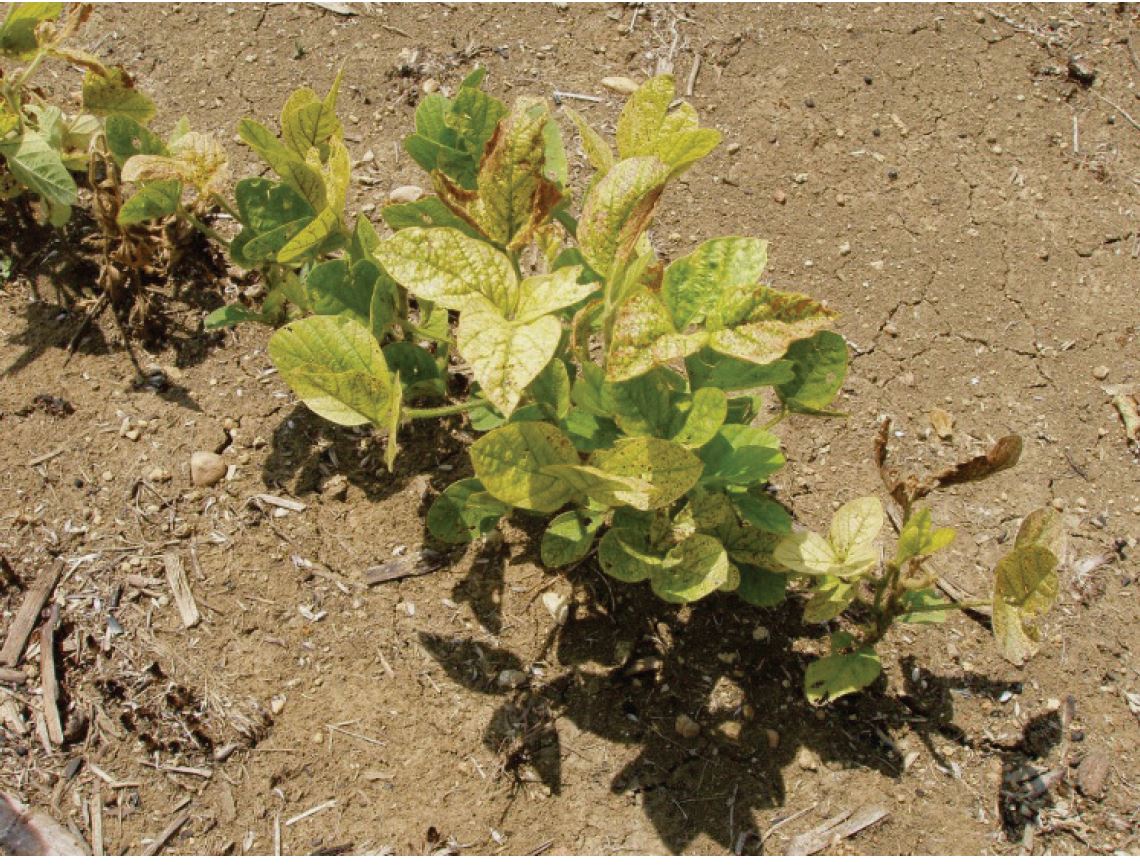
Image 3 - Iron deficiency chlorosis (IDC) of soybeans caused by high pH soils in the Black Belt region of central Alabama. IDC is a complex plant disorder associated with high pH soils and soils containing soluble salts where chemical conditions reduce the availability of iron.
Micronutrient deficiencies usually have a patchy distribution in fields due to variation in soil properties that affect availability (e.g., pH, drainage, and salinity) and management history such as manure applications. Learning to visually identify deficiencies is important in recognizing problem areas and planning remediation for future crops. However, it is often too late for corrective action in the current crop by the time visual symptoms appear.
Common Micronutrient Deficiencies
Micronutrient deficiencies tend to appear with much greater frequency on specific soil types and in certain crops (Table 4).
Table 4. Soil conditions which may lead to micronutrient deficiencies for various crops3.
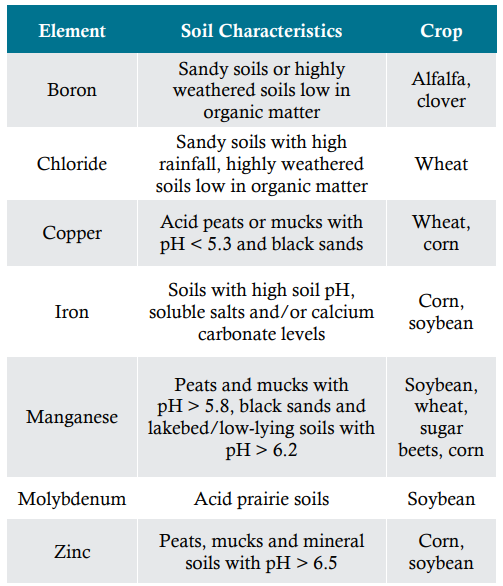
Soil Tests to Detect Micronutrient Deficiencies
Many plant symptoms associated with micronutrient deficiencies, including stunting and chlorosis, may have a variety of causes, including disease, insect or herbicide damage, or environmental conditions. Soil and plant analysis are both useful in determining if the cause is truly nutritional. Though adequate for this purpose, micronutrient soil tests are not as precise as soil pH, phosphorus, and potassium tests.
The most reliable micronutrient soil tests are for zinc, boron, copper, and manganese. Because interpretations are soil specific, it is best to use locally calibrated recommendations. Soil tests for iron and molybdenum are considered to be of little value in predicting the supply of these nutrients in soils. When sampling for micronutrients, sample the root zone down to 8 inches deep.
Plant Analysis to Detect Micronutrient Deficiencies
Plant tissue analysis is more reliable than soil testing for identifying many micronutrient problems and can also supplement soil test information. Tissue testing is especially valuable in cases where reliable soil tests are unavailable. However, molybdenum and chloride levels cannot be determined by this method.
Plant analysis can be used in two ways; one is to monitor the crop's micronutrient status, and the other is to diagnose a problem situation. By quantifying the nutrient content of tissues, plant analysis can point out an existing or potential problem before visual symptoms develop.
If in-season micronutrient deficiencies are suspected, plant samples should be taken as early as practical; treatments, when needed, should be made in a timely manner. Research has shown that once a micronutrient deficiency is detected, the plant has already suffered irreversible yield loss.
Because plant nutrient composition varies with the crop, age of the plant, part of the plant sampled and other factors, it is important to follow the standard sampling procedures provided by your plant diagnostic laboratory. In order to obtain a representative sample, take multiple plants from areas randomly distributed throughout the affected field area. Avoid border plants and those contaminated with dust, soil or foliar sprays. Taking samples of non-symptomatic plants to compare with apparent nutrient-deficient plants can increase the usefulness of plant analysis. Be aware that interpreting results is complex and may require expert advice.







